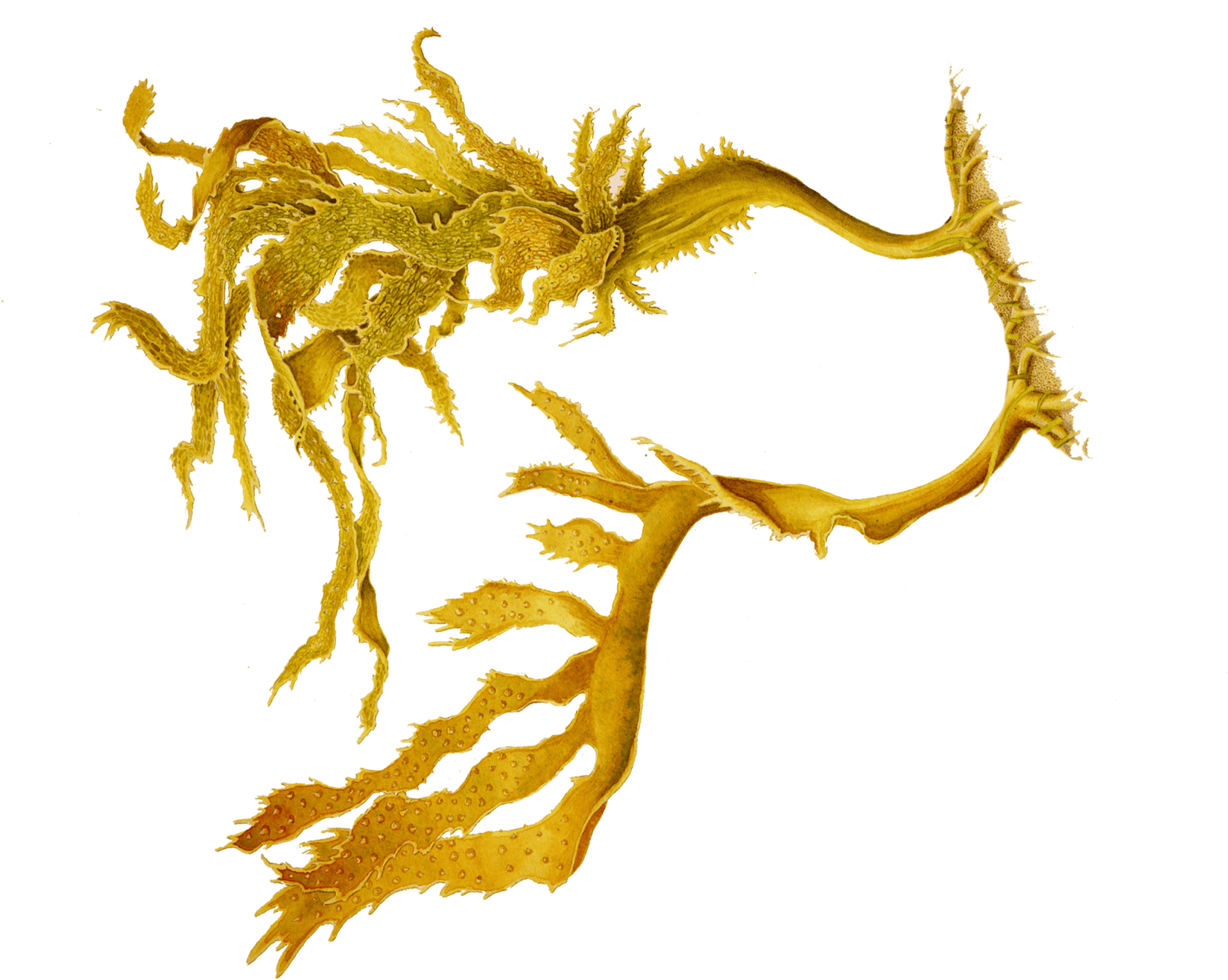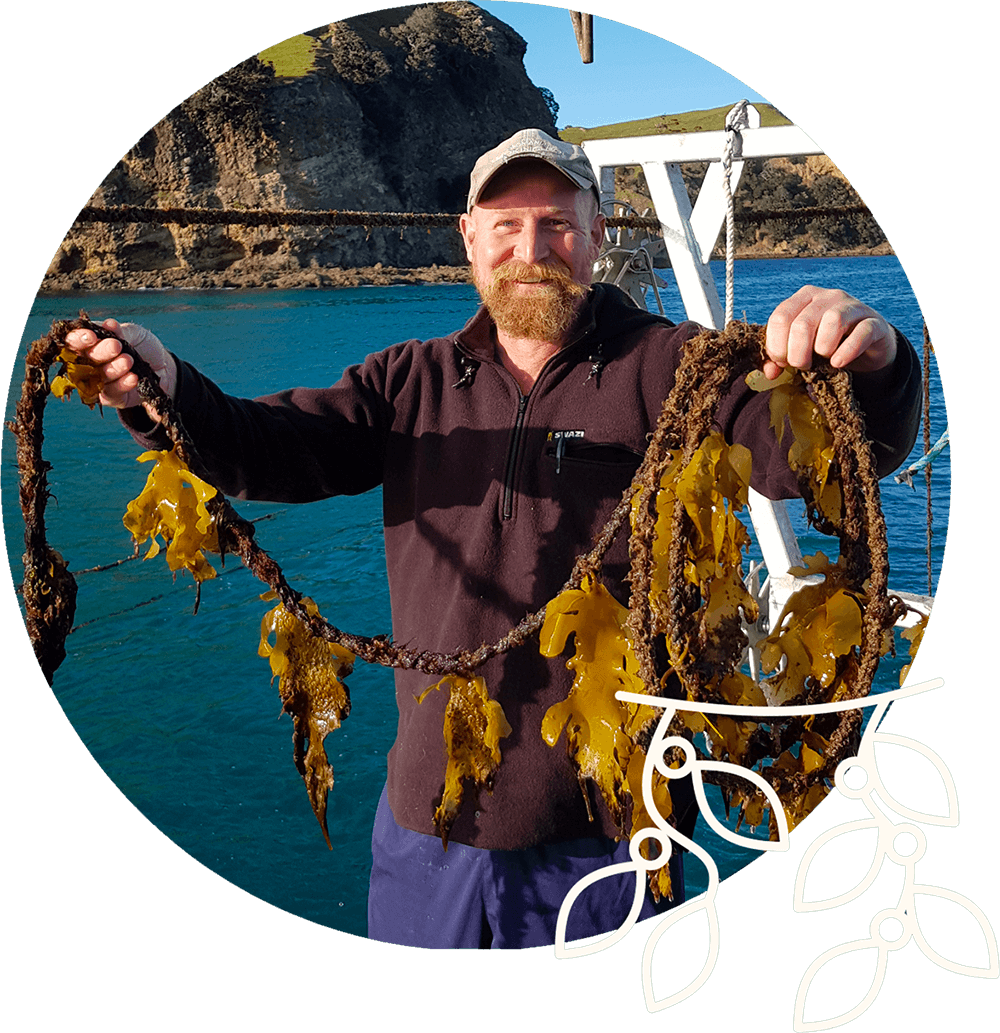We’re partnering with GreenWave in the United States to adapt its highly successful
regenerative ocean farming model for New Zealand.
An innovative three-year
seaweed farming pilot
There is no functional supply chain for the seaweed sector in New Zealand; this has been a huge constraint in developing and growing the sector. This means hatchery, farming, harvesting and farm designs all need to be developed and tested for our local seaweed species and conditions. With guidance from GreenWave USA we have developed and are implementing a plan to establish and optimise an end-to-end seaweed supply chain that enables the growth of a new high-value sector for New Zealand.
The $5 million GreenWave Aotearoa pilot aims to reduce the uncertainty around the productivity of a seaweed farming operation and provide the proof-of-concept for farming native seaweed at scale.

Maximising our impact
through collaboration
The GreenWave Aotearoa pilot is led by EnviroStrat, in collaboration with a network of partners.
Lucas Evans from Premium Seas is facilitating access to water space and providing operational oversight for the pilot delivery in Coromandel.
Ngāi Tai ki Tāmaki are providing additional recently consented marine farming space to support the pilot.
University of Waikato researchers Dr Marie Magnusson and Dr Rebecca Lawton are overseeing the research and trial design.
Professor Andrew Jeffs at University of Auckland is leading monitoring to establish the biodiversity impacts of co-locating mussels and seaweed farming.
AgriSea are contributing their post-harvest production, market and processing expertise and have agreed to purchase all product for the duration of the pilot.
Pilot Timeline
EnviroStrat connected with GreenWave and started a discussion about how to adapt its model for New Zealand.
Feasibility study exploring whether the GreenWave model could work in New Zealand.
Developed a detailed investment case to support the establishment of regenerative ocean farming in New Zealand. The investment case also identified that a multi-year pilot to confirm productivity (and therefore financial viability) of seaweed farming was a required first step.
Secured funding and partnerships to
implement the pilot.
Stage 1 – Can we grow seaweed on
lines?
Establish the best farm line configuration
Stage 2 – Can we grow seaweed from
spores?
Optimise hatchery conditions, outplanting logistics and determine the best time to outplant
First outplanting at scale of hatchery
grown Ecklonia radiata seaweed
CURRENT STAGE
Stage 3 – Can we grow at
commercial scale?
Refine farming logistics and model assumptions at scale
Want to stay up to date with GreenWave Aotearoa’s progress?
Join our mailing list to receive updates from the GreenWave Aotearoa pilot as we achieve new milestones.
Seaweed’s huge potential to be a game changer for Aotearoa New Zealand’s blue economy.
Seaweed is the fundamental crop for the regenerative ocean farming model. While numerous initiatives and businesses are targeting seaweed as a novel primary resource for the blue economy, the New Zealand sector is currently operating at a small scale. Gaps in reliable supply and barriers, including legislative and operational, limit the sector’s ability to grow.
A prosperous seaweed sector could provide meaningful economic, environmental, social and cultural benefits to local communities, along with broader impacts nationally. Our philosophy is not just finding a new way to grow seaweed, but focusing a lens on an environmental problem that we can help solve, while creating economic opportunity.

Our funding partners
EnviroStrat, along with the Sustainable Food and Fibre Futures fund (SFFF), administered by the Ministry for Primary Industries, impact investors and philanthropists have contributed to funding. Early contributions were received from Auckland Council, Bay Trust, Foundation North, The Tindall Foundation and Akina.






